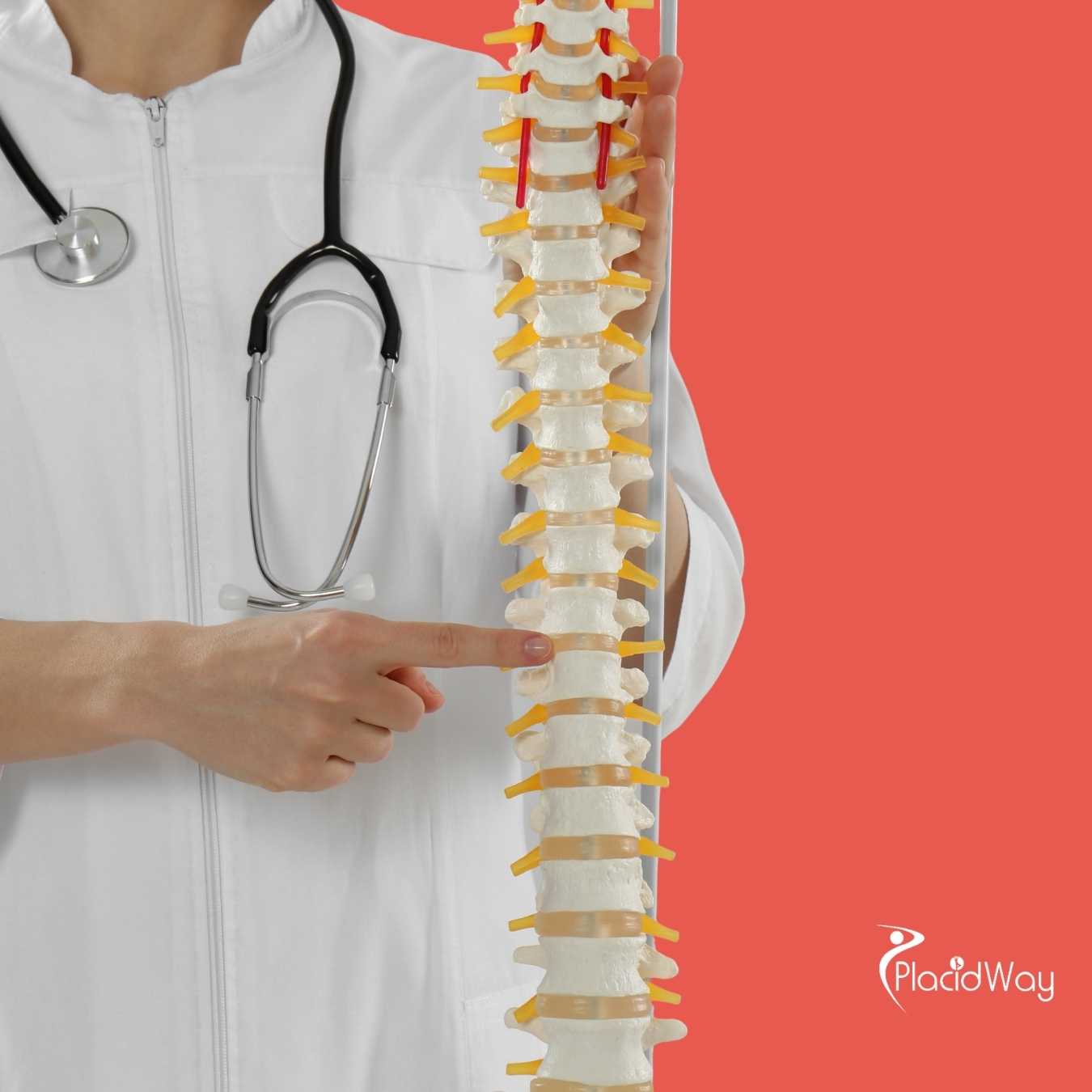Ovarian Stem Cell Therapy: Real Success Rates and Outcomes
.png)
Welcome to an in-depth look at stem cell ovarian rejuvenation, a cutting-edge field offering new hope to women facing fertility challenges or symptoms of premature ovarian insufficiency (POI). This innovative approach aims to restore ovarian function by utilizing the regenerative power of stem cells. It’s a topic that generates a lot of questions, especially regarding its effectiveness and potential for real-world results.
Understanding the intricacies of stem cell ovarian rejuvenation means looking beyond the headlines and delving into the scientific progress, clinical trials, and patient experiences. Many women, seeking alternatives to traditional fertility treatments, are curious about what this therapy truly offers. Here, we aim to provide clear, comprehensive answers to your most pressing questions, helping you navigate this exciting, yet still evolving, area of reproductive medicine.
What is the Success Rate of Stem Cell Ovarian Rejuvenation?
The success rate of stem cell ovarian rejuvenation is a primary concern for anyone considering this therapy. It's important to understand that "success" can be measured in several ways, including restoration of menstrual cycles, improvement in hormone levels (like AMH, FSH, and estrogen), increased antral follicle count, enhanced egg quality, and ultimately, live birth rates. While this field is relatively new and still undergoing extensive research, early studies and clinical reports have shown encouraging outcomes.
For women with premature ovarian insufficiency (POI) or diminished ovarian reserve, preliminary data suggests that stem cell ovarian rejuvenation can lead to significant improvements. Some clinics and studies report that a substantial percentage of women experience restored menstrual cycles within a few months post-treatment. Furthermore, improvements in ovarian biomarkers like Anti-Müllerian Hormone (AMH), which indicates ovarian reserve, and Follicle-Stimulating Hormone (FSH), which reflects ovarian function, have been observed. These biological changes often correlate with an increased chance of natural conception or successful assisted reproductive technologies (ART).
It's crucial to manage expectations, as individual responses can vary greatly based on factors such as age, the severity of ovarian dysfunction, the specific type of stem cells used, and the treatment protocol. While some women have achieved natural pregnancies after stem cell therapy for fertility, others may see improvements in ovarian health that enhance their chances with IVF. The field is continuously evolving, and ongoing research aims to standardize protocols and further quantify overall success.
How Does Stem Cell Ovarian Rejuvenation Work?
The fundamental principle behind stem cell ovarian rejuvenation lies in the remarkable regenerative capabilities of stem cells. Typically, mesenchymal stem cells (MSCs) are used, which can be harvested from various sources, such as a patient's own bone marrow, adipose (fat) tissue, or umbilical cord tissue. Once isolated, these cells are processed and then injected directly into the ovaries.
Upon reaching the ovaries, MSCs exert their therapeutic effects through several mechanisms. They release growth factors and cytokines that stimulate local cells, reduce inflammation, and improve blood supply to the ovarian tissue. This improved microenvironment can help awaken dormant follicles, protect existing egg cells from damage, and potentially trigger the development of new egg precursors. The goal is to revitalize the ovaries, making them more receptive to egg development and maturation.
Unlike merely masking symptoms, this treatment aims to address the root cause of diminished ovarian function by promoting cellular repair and regeneration. This regenerative process is what offers hope for women with conditions like premature ovarian insufficiency (POI) or age-related decline in ovarian reserve, potentially extending their reproductive window or improving their response to other fertility treatments.
Who is a Candidate for Stem Cell Ovarian Rejuvenation?
Identifying suitable candidates for stem cell ovarian rejuvenation is crucial for maximizing the potential benefits of the therapy. Generally, women who may benefit from this treatment are those experiencing reduced ovarian function that impacts their fertility or overall hormonal health. This includes women diagnosed with premature ovarian insufficiency (POI), where the ovaries stop functioning normally before the age of 40.
Other potential candidates include women with diminished ovarian reserve (DOR) due to aging or unknown causes, characterized by low AMH levels and high FSH levels. Women in perimenopause experiencing bothersome symptoms related to declining ovarian hormone production might also be considered. Additionally, those who have undergone multiple unsuccessful cycles of in-vitro fertilization (IVF) due to poor egg quality or quantity may explore stem cell therapy for fertility as a complementary approach.
A thorough medical evaluation, including hormonal assessments, ultrasound scans, and a review of medical history, is essential to determine suitability. It's important that candidates understand the investigational nature of the treatment and have realistic expectations about the potential outcomes of ovarian rejuvenation.
What are the Expected Outcomes of Stem Cell Ovarian Rejuvenation?
The expected outcomes of stem cell ovarian rejuvenation are diverse and depend largely on the individual's baseline ovarian health and overall response to the treatment. Many women hope for pregnancy, but even without conception, significant improvements in ovarian function can be life-changing. One common outcome is the normalization of hormonal profiles. This often manifests as a rise in AMH levels, indicating an increase in ovarian reserve, and a decrease in FSH levels, suggesting improved ovarian response.
For women with irregular or absent periods due to POI or menopause, the restoration of regular menstrual cycles is a highly anticipated outcome. This indicates a revival of the ovaries' ability to produce hormones and mature follicles. Furthermore, symptomatic relief from hot flashes, night sweats, mood swings, and other perimenopausal symptoms can greatly enhance quality of life. For those pursuing pregnancy, the ultimate goal is improved egg quality and quantity, leading to a higher chance of natural conception or success with assisted reproductive technologies.
It’s important to note that these changes usually don't happen overnight. It can take several weeks to months to observe the full effects of the treatment, as the stem cells work to regenerate and repair ovarian tissue. Ongoing monitoring by a healthcare professional is vital to track progress and adjust any subsequent fertility plans.
What are the Risks and Side Effects of Stem Cell Ovarian Rejuvenation?
As with any medical procedure, there are potential risks and side effects associated with stem cell ovarian rejuvenation, although they are generally considered low. The procedure involves two main stages: stem cell harvesting and ovarian injection. During the stem cell harvesting, typically from adipose tissue (fat) or bone marrow, there might be temporary bruising, swelling, or discomfort at the collection site. Risks associated with any minor surgical procedure, such as infection or bleeding, are also present, though rare.
The injection of stem cells into the ovaries is usually performed under ultrasound guidance, often transvaginally. This part of the procedure carries a small risk of pelvic pain, discomfort, or, in very rare cases, injury to surrounding organs or infection. Most patients experience mild, temporary discomfort that resolves within a few days. Since autologous stem cells (from the patient's own body) are typically used, the risk of immunological rejection is virtually non-existent.
It is crucial to choose a reputable clinic with experienced practitioners to minimize these risks. Patients should have a detailed discussion with their healthcare provider about all potential side effects and complications before proceeding with ovarian rejuvenation therapy.
How Much Does Stem Cell Ovarian Rejuvenation Cost?
The financial aspect of stem cell ovarian rejuvenation is a significant consideration for many individuals. The cost can vary widely, influenced by several factors. These include the reputation and location of the clinic, the expertise of the medical team, the specific protocol used (e.g., source of stem cells, number of injections), and whether additional supportive therapies are included. In general, patients can expect a range from several thousand to over ten thousand U.S. dollars per treatment cycle.
For example, clinics in Western countries with advanced facilities might be on the higher end of the spectrum, while treatments in regions known for medical tourism may offer more competitive pricing. It's important to obtain a detailed quote that covers all aspects of the procedure, including consultations, stem cell harvesting, processing, the ovarian injection, and follow-up care. Because stem cell ovarian rejuvenation is still considered experimental or investigational by many insurance providers, it is typically not covered by health insurance, meaning patients usually bear the full cost out-of-pocket.
When evaluating costs, prospective patients should also factor in potential travel and accommodation expenses if they are considering treatment abroad, as part of fertility tourism. Comparing different clinics and understanding what is included in their packages is essential for making an informed decision.
Is Stem Cell Therapy for Fertility Legal Everywhere?
The legal landscape surrounding stem cell therapy for fertility, including stem cell ovarian rejuvenation, is complex and varies significantly from country to country. In some nations, regulations are highly restrictive, treating these therapies as experimental and limiting their availability to approved clinical trials. This is often due to concerns about patient safety, efficacy, and ethical considerations surrounding the use of biological materials.
Conversely, other countries have more permissive regulations, allowing clinics to offer these treatments as part of established clinical practice, albeit sometimes with specific oversight. This disparity in legal frameworks is a major driver for medical tourism, where patients travel internationally to access therapies not readily available or legally permissible in their home countries. Patients seeking ovarian rejuvenation abroad often find destinations where the legal environment allows for a broader range of innovative treatments.
Before considering treatment, it is vital to research the legal status and regulatory environment of stem cell therapy for fertility in both your home country and any potential destination for treatment. This ensures compliance with local laws and helps you make informed decisions about where to pursue therapy safely and ethically.
What Clinics Offer Stem Cell Ovarian Rejuvenation Abroad (Medical Tourism)?
For individuals exploring stem cell ovarian rejuvenation, the global landscape offers numerous options, often through the growing trend of medical tourism. Several countries have become prominent destinations for advanced fertility treatments, including stem cell therapies, due to a combination of favorable regulations, experienced specialists, and competitive pricing. Popular destinations include Greece, particularly Athens, which has pioneered some of these regenerative approaches for fertility. Mexico is another hub, known for its accessible medical services and innovative treatments.
Other countries like Ukraine and the United Arab Emirates (UAE) also feature clinics specializing in stem cell therapy for fertility. These clinics often cater specifically to international patients, providing comprehensive packages that may include consultations, treatment, and sometimes even assistance with travel logistics. The appeal of seeking ovarian rejuvenation medical tourism often lies in the ability to access cutting-edge therapies that might be unavailable or cost-prohibitive in a patient's home country.
When considering clinics abroad, it is essential to conduct thorough research. Look for clinics with internationally recognized accreditations, transparent success rates (if available for specific treatments), clear patient testimonials, and highly qualified medical staff specializing in reproductive medicine and stem cell applications. A reputable medical tourism facilitator can also provide invaluable assistance in vetting clinics and coordinating the entire treatment journey.
What Should I Consider When Planning Ovarian Rejuvenation Medical Tourism?
Planning ovarian rejuvenation medical tourism requires careful consideration to ensure a safe, effective, and positive experience. The first priority should be the clinic's credentials: verify its accreditations, the qualifications of its doctors (especially their experience in reproductive endocrinology and stem cell applications), and their safety protocols. It's also vital to understand the exact type of stem cells used, their source (autologous, allogeneic), and the specific method of delivery and dosage, as these can vary between clinics and impact outcomes.
Beyond the medical aspects, financial planning is crucial. Request a comprehensive breakdown of all costs, including the procedure itself, pre-treatment tests, post-treatment follow-up, and any potential hidden fees. Factor in travel expenses, accommodation, and the duration of your stay. Consider the logistical aspects: how will you travel, what are the visa requirements, and what kind of support does the clinic offer for international patients (e.g., language assistance, airport transfers)?
Finally, think about post-treatment care. How will you manage follow-up appointments, monitoring, or any potential complications once you return home? Clear communication with the clinic before, during, and after your treatment is paramount. A well-organized medical tourism provider can assist with many of these considerations, helping you make an informed decision for your stem cell ovarian rejuvenation journey.
How Does Ovarian PRP Compare to Stem Cell Treatments?
Both Ovarian PRP (Platelet-Rich Plasma) and stem cell ovarian rejuvenation are regenerative therapies aimed at improving ovarian function, but they operate through distinct mechanisms. Ovarian PRP involves drawing a patient's blood, processing it to concentrate platelets, and then injecting this PRP into the ovaries. Platelets contain a rich supply of growth factors that can stimulate healing, improve blood flow, and potentially activate dormant follicles within the ovary. It's essentially using the body's own healing compounds to revitalize ovarian tissue.
In contrast, stem cell ovarian rejuvenation introduces actual stem cells, typically mesenchymal stem cells (MSCs), into the ovaries. These cells have a broader range of regenerative capabilities. Beyond simply providing growth factors, stem cells can differentiate into various cell types, repair damaged tissue, modulate inflammation, and secrete a wider array of bioactive molecules that promote tissue regeneration and potentially even neofolliculogenesis (formation of new follicles). Stem cells are generally considered to have a more profound and sustained regenerative potential compared to PRP.
While both therapies show promise for improving ovarian reserve and function, the choice between them may depend on the individual's specific condition, the severity of ovarian dysfunction, and the recommendations of their fertility specialist. Some clinics even combine these approaches for a synergistic effect, aiming for enhanced outcomes in fertility treatment.
For more information on medical tourism options for stem cell ovarian rejuvenation and other advanced healthcare services, explore the comprehensive solutions offered by PlacidWay. We connect you with top global clinics and specialists to help you make informed decisions about your health journey.


.png)

-Package-in-Kuala-Lumpur,-Malaysia-by-FirstCell.jpg)







Share this listing